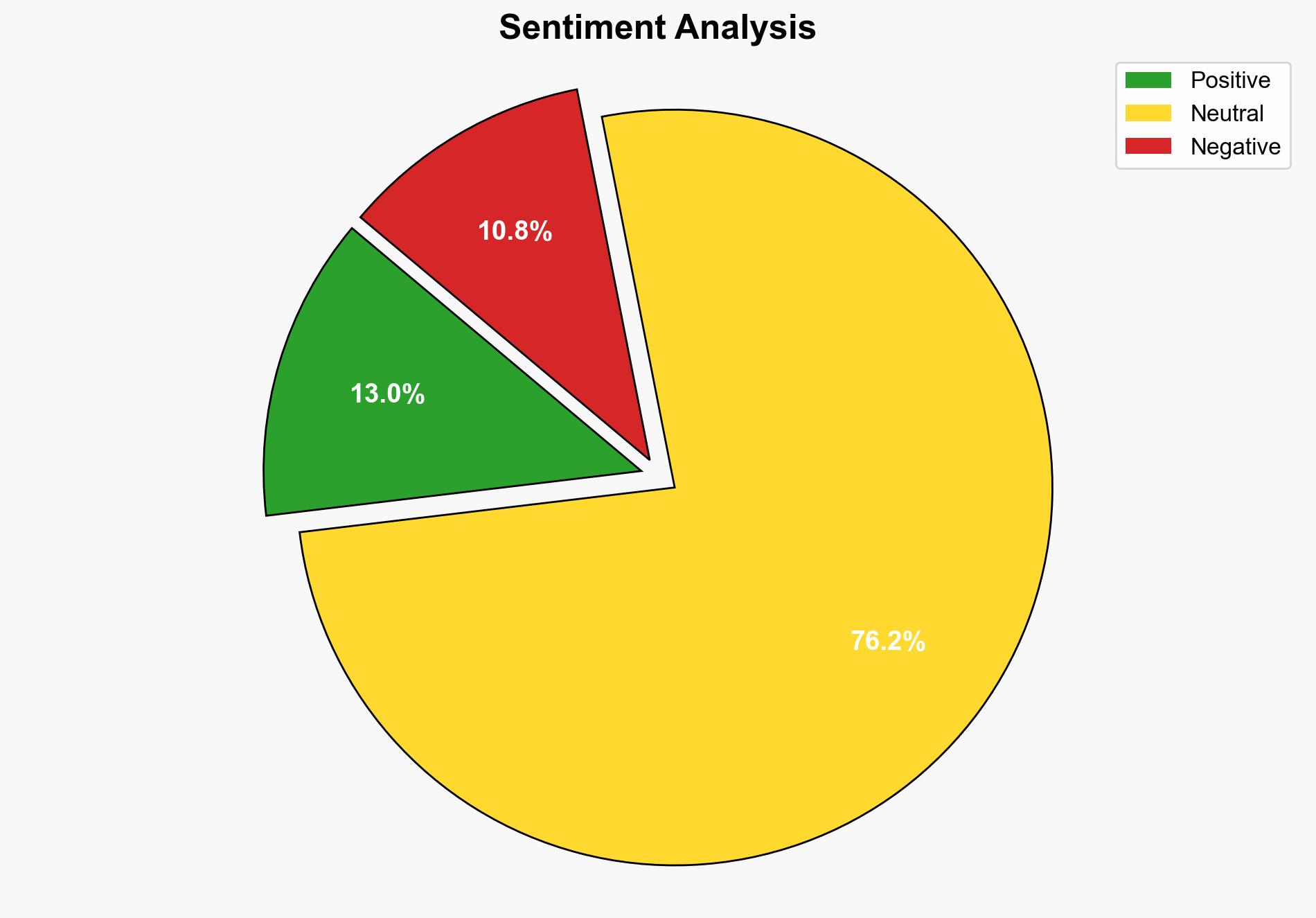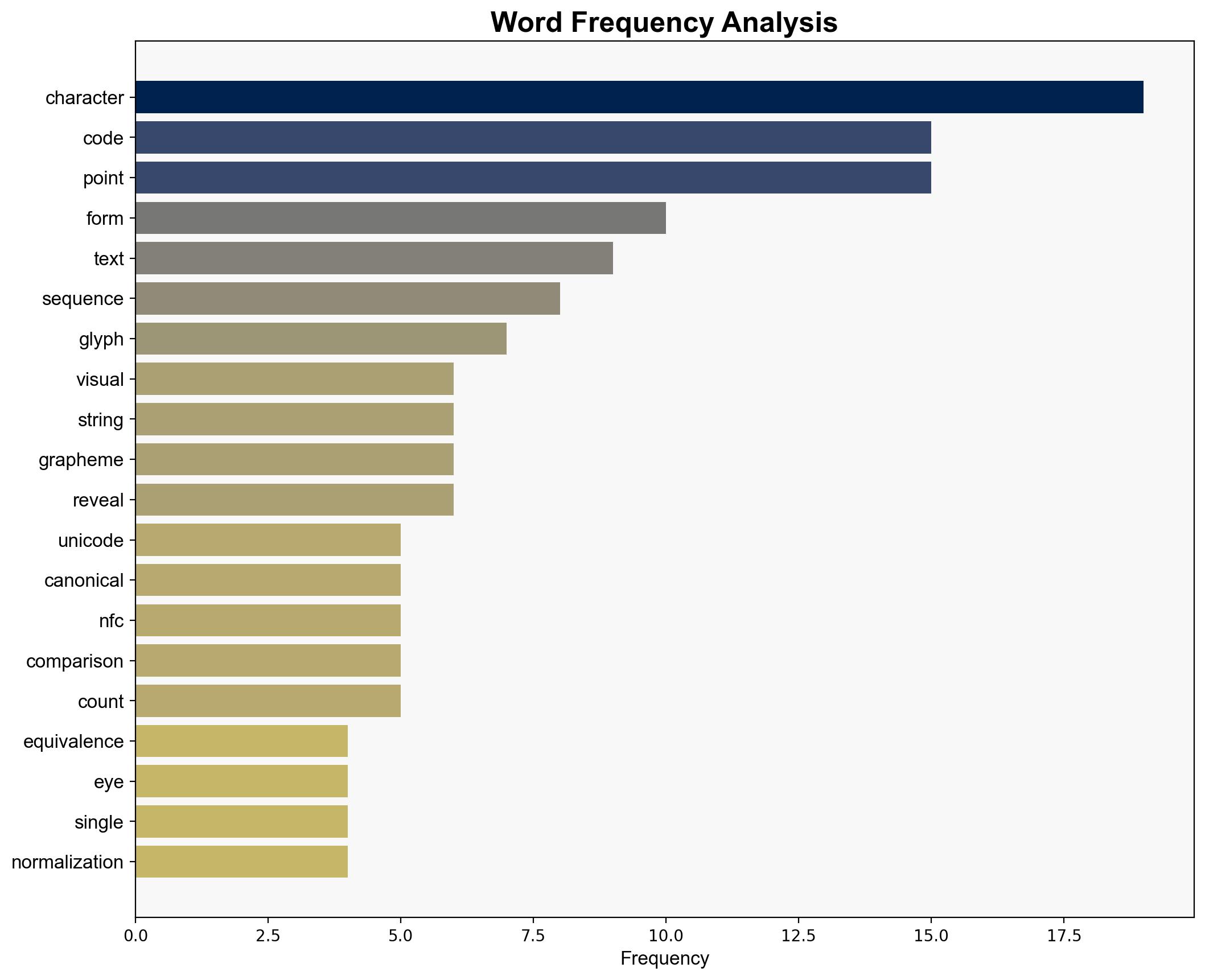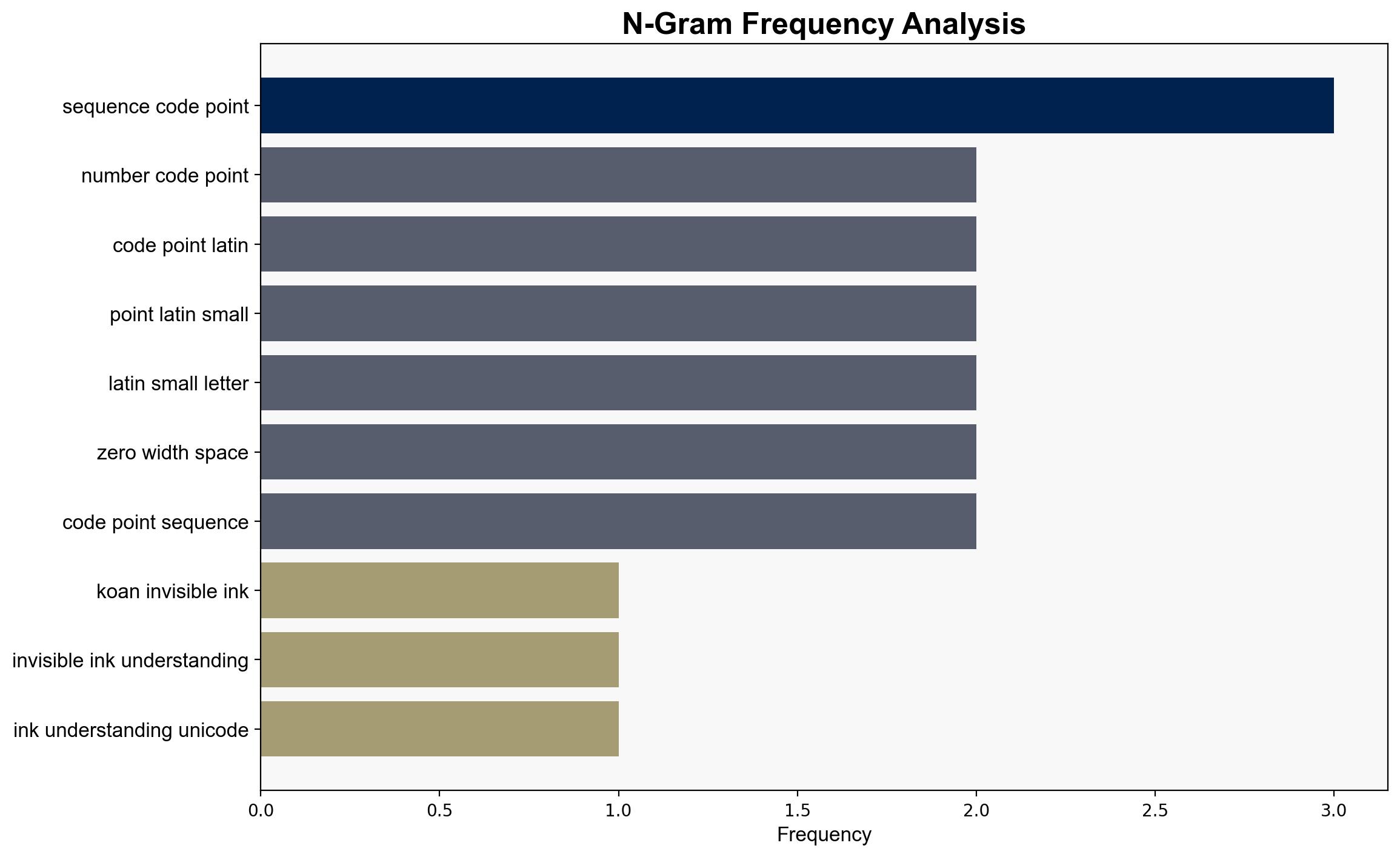Koan 15 The Invisible Ink – by Vivis Dev – Python Koans – Substack.com
Published on: 2025-11-07
Intelligence Report: Koan 15 The Invisible Ink – by Vivis Dev – Python Koans – Substack.com
1. BLUF (Bottom Line Up Front)
The analysis suggests a moderate confidence level in the hypothesis that the deceptive nature of Unicode equivalence poses significant cybersecurity risks, particularly through homographic attacks. The recommended action is to enhance awareness and implement robust normalization and validation processes in software development to mitigate these risks.
2. Competing Hypotheses
Hypothesis 1: The deceptive nature of Unicode equivalence primarily poses a cybersecurity risk through homographic attacks, where visually identical characters from different scripts are used maliciously.
Hypothesis 2: The primary concern with Unicode equivalence is its impact on data integrity and processing efficiency, rather than direct cybersecurity threats.
Using the Analysis of Competing Hypotheses (ACH) 2.0, Hypothesis 1 is better supported due to the explicit mention of homographic attacks and phishing risks in the source text. The focus on visual deception aligns with known cybersecurity threats.
3. Key Assumptions and Red Flags
– **Assumptions:** It is assumed that all software systems are equally vulnerable to Unicode-based attacks, which may not be the case due to varying levels of security protocols.
– **Red Flags:** The text lacks specific examples of past incidents or statistical data to quantify the risk, indicating potential gaps in the intelligence.
– **Blind Spots:** The analysis does not account for the potential evolution of Unicode standards that might address these vulnerabilities.
4. Implications and Strategic Risks
The deceptive nature of Unicode equivalence could lead to increased phishing attacks, compromising sensitive data and undermining trust in digital communications. Economically, this could result in significant financial losses for businesses and individuals. Geopolitically, state actors might exploit these vulnerabilities for cyber espionage.
5. Recommendations and Outlook
- Enhance awareness among software developers about Unicode normalization and validation techniques.
- Implement comprehensive training programs focused on identifying and mitigating homographic attacks.
- Scenario-based projections:
- Best Case: Adoption of robust Unicode handling practices reduces the incidence of homographic attacks.
- Worst Case: Widespread exploitation of Unicode vulnerabilities leads to significant cybersecurity breaches.
- Most Likely: Incremental improvements in software security reduce but do not eliminate the risk.
6. Key Individuals and Entities
No specific individuals or entities are mentioned in the source text.
7. Thematic Tags
national security threats, cybersecurity, counter-terrorism, regional focus





